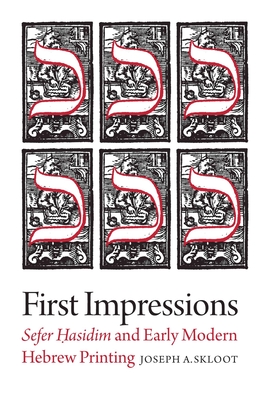Unavailable - call the store for details
Description
Uncovers the history of creative adaptation and transformation through a close analysis of the creation of the Sefer Hasidim book.
In 1538, a partnership of Jewish silk makers in the city of Bologna published a book entitled Sefer Hasidim, a compendium of rituals, stories, and religious instruction that primarily originated in medieval Franco-Germany. How these men, of Italian and Spanish descent, came to produce a book that would come to shape Ashkenazic culture, and Jewish culture more broadly, over the next four centuries is the basis of this kaleidoscopic study of the history of Hebrew printing in the sixteenth century.
During these early years of printing, the classic works of ancient and medieval Hebrew and Jewish literature became widely available to Jewish (and non-Jewish) readers for the first time. Printing, though, was not merely the duplication and distribution of pre-existing manuscripts, it was the creative adaptation and transformation of those manuscripts by printers. Ranging from Catholic Bologna to Protestant Basel to the Jewish heartland of the Polish-Lithuanian Commonwealth, Joseph A. Skloot uncovers the history of that creativity by examining the first two print editions of Sefer Hasidim. Along the way, he demonstrates how volumes that were long thought to be eternal and unchanging were in fact artifacts of historical agency and contingency, created by and for human beings.
About the Author
Joseph A. Skloot, Ph.D. is the Rabbi Aaron D. Panken Assistant Professor of Modern Jewish Intellectual History at Hebrew Union College-Jewish Institute of Religion/New York. He is a historian of Jewish culture and religious thought in the early modern and modern periods. He received his Ph.D. in Jewish History from Columbia University, his rabbinical ordination from HUC-JIR, and his A.B. from Princeton University. His writings have appeared in Modern Judaism, the CCAR Journal, and several anthologies.
Praise For…
“By employing the scholarly paradigm of microhistory, the author masterfully . . . sheds light on broader questions surrounding the early days of the printing press. . . . By zooming in on these particular editions, the author provides valuable insights into the interplay between Jewish literature, the printing press, and the complex sociocultural landscape of the time.”
— Jewish Link
“Who makes a book, the author or the publisher? Skloot studies a classic of medieval Jewish literature, Sefer Hasidim, to answer this old question in a new way. He takes the reader into two printing houses, one Jewish and one Christian, and shows how each of them framed and transformed the book, giving it an author and sometimes rewriting its text, in their editions. A classic of medieval spirituality that remained labile in manuscript, Sefer Hasidim took on the form it would retain for centuries in the inky hands of correctors. This lively and learned book is a tour de force of book history, rich in textual and human detail.”
— Anthony T. Grafton, Princeton University
“Recent research has revealed that what we call Sefer Hasidim was composed from a loose collection of a variety of earlier ‘treatises’ and ‘text blocks’ without any coherent organization. In this groundbreaking study, Skloot demonstrates convincingly and in detail how this loose collection became a book in the proper sense of the word only during its printing process.”
— Peter Schäfer, professor emeritus, Princeton University
